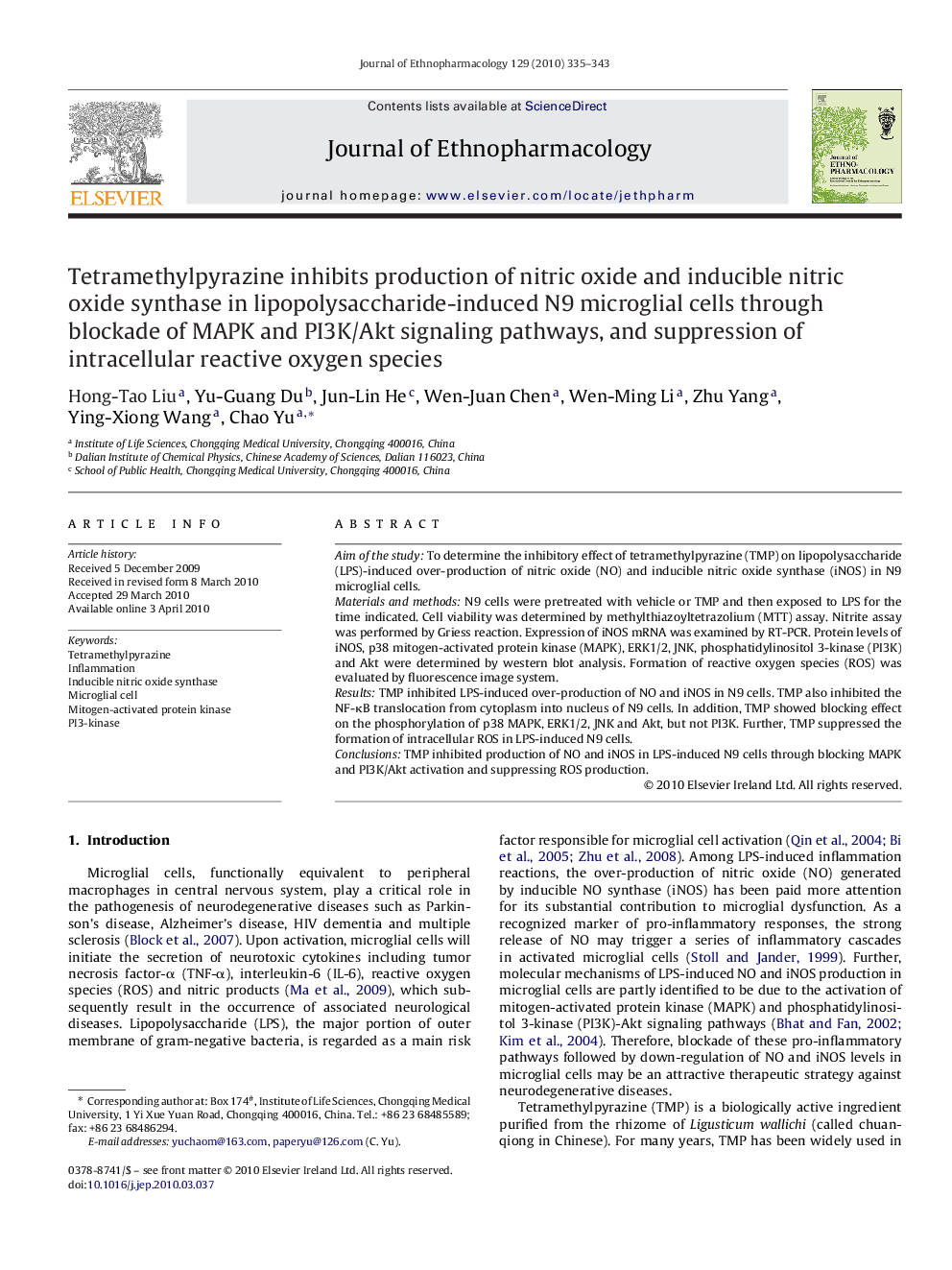| Article ID | Journal | Published Year | Pages | File Type |
|---|---|---|---|---|
| 2545857 | Journal of Ethnopharmacology | 2010 | 9 Pages |
Aim of the studyTo determine the inhibitory effect of tetramethylpyrazine (TMP) on lipopolysaccharide (LPS)-induced over-production of nitric oxide (NO) and inducible nitric oxide synthase (iNOS) in N9 microglial cells.Materials and methodsN9 cells were pretreated with vehicle or TMP and then exposed to LPS for the time indicated. Cell viability was determined by methylthiazoyltetrazolium (MTT) assay. Nitrite assay was performed by Griess reaction. Expression of iNOS mRNA was examined by RT-PCR. Protein levels of iNOS, p38 mitogen-activated protein kinase (MAPK), ERK1/2, JNK, phosphatidylinositol 3-kinase (PI3K) and Akt were determined by western blot analysis. Formation of reactive oxygen species (ROS) was evaluated by fluorescence image system.ResultsTMP inhibited LPS-induced over-production of NO and iNOS in N9 cells. TMP also inhibited the NF-κB translocation from cytoplasm into nucleus of N9 cells. In addition, TMP showed blocking effect on the phosphorylation of p38 MAPK, ERK1/2, JNK and Akt, but not PI3K. Further, TMP suppressed the formation of intracellular ROS in LPS-induced N9 cells.ConclusionsTMP inhibited production of NO and iNOS in LPS-induced N9 cells through blocking MAPK and PI3K/Akt activation and suppressing ROS production.
Graphical abstractTetramethylpyrazine, extracted from the rhizome of Ligusticum wallichi showed significant anti-oxidant and anti-inflammatory activities in in vitro and in vivo experiments.Figure optionsDownload full-size imageDownload as PowerPoint slide
